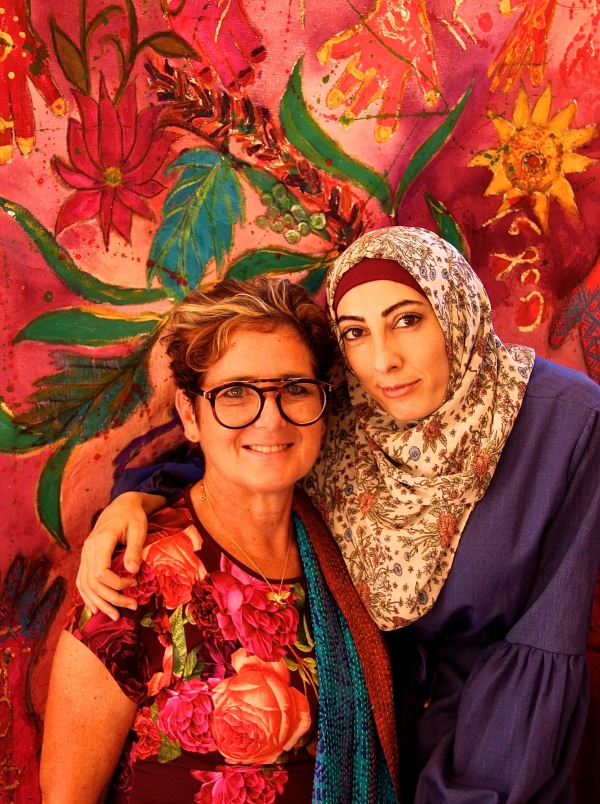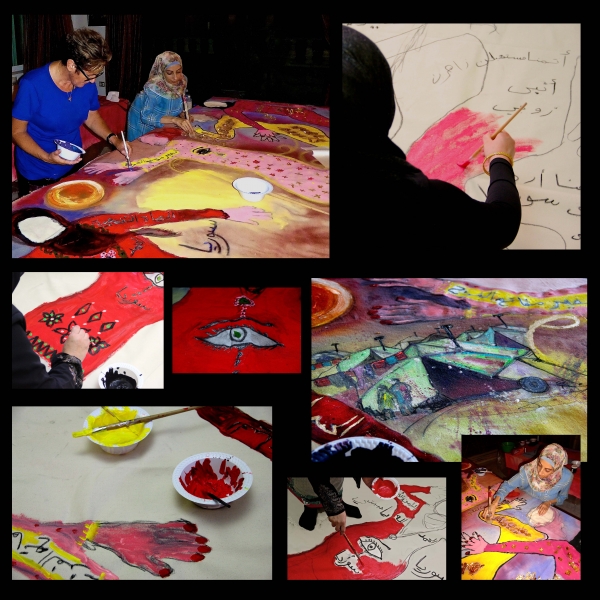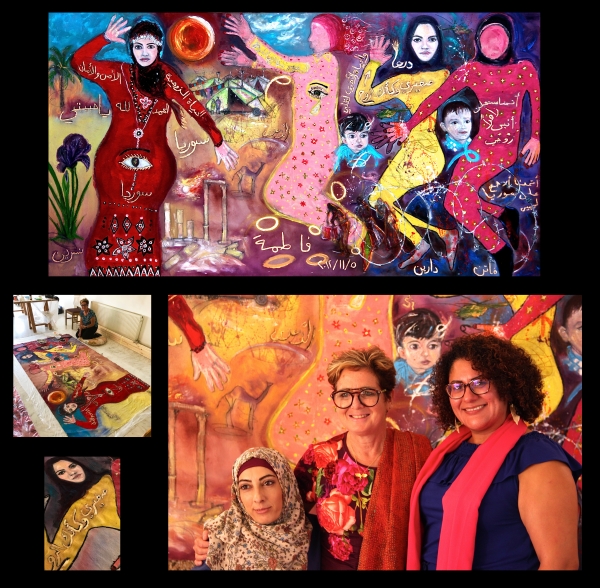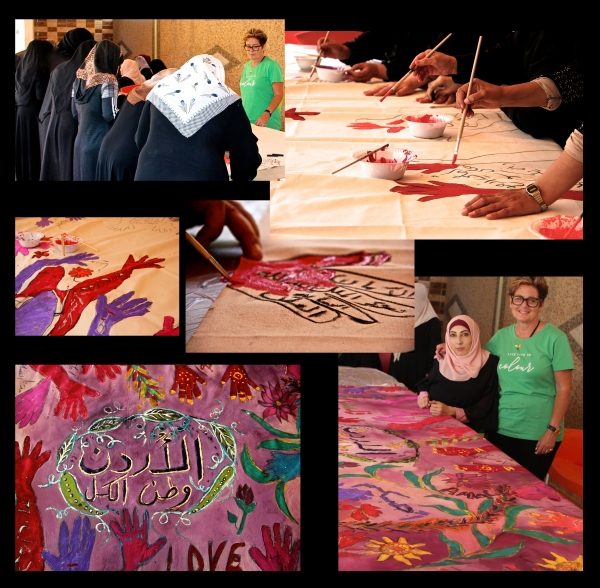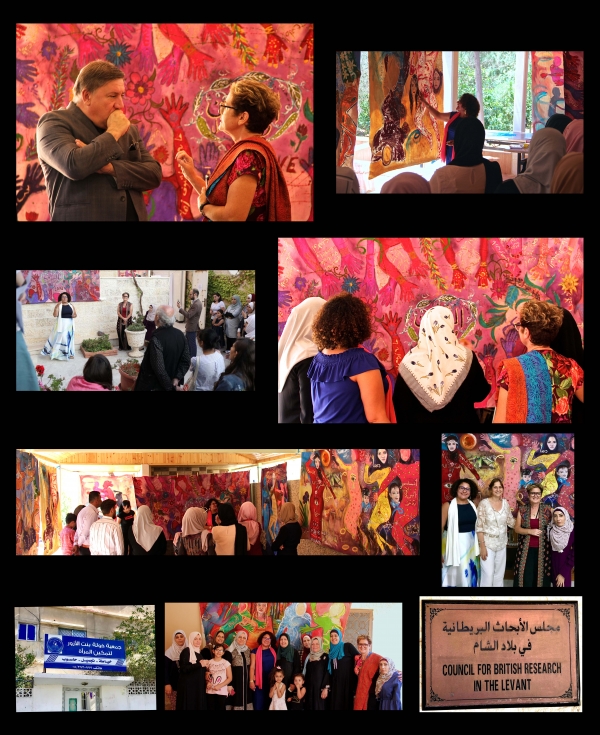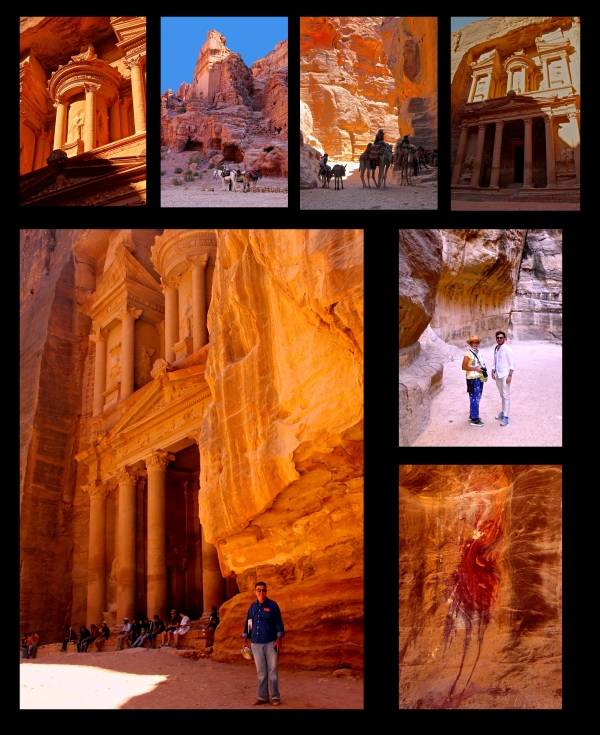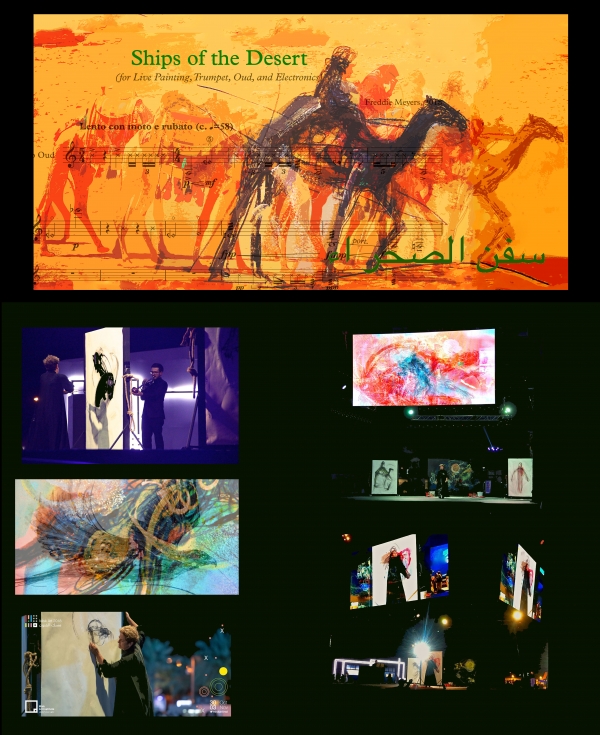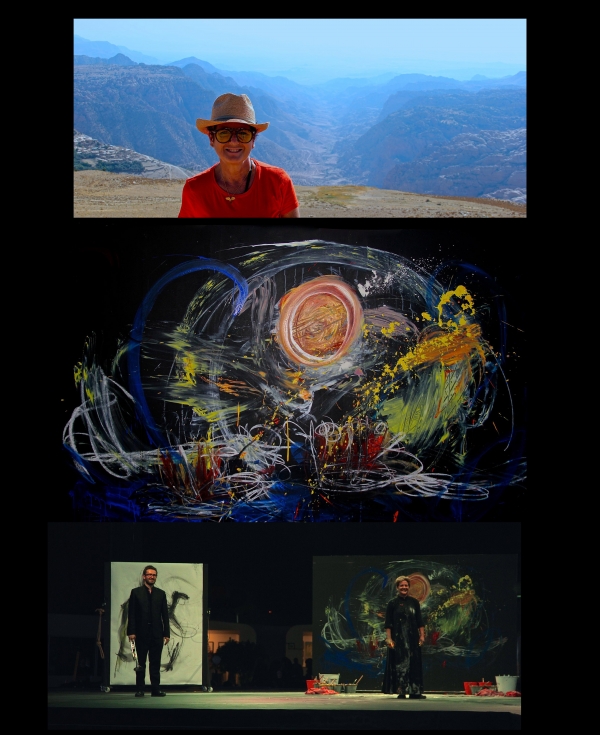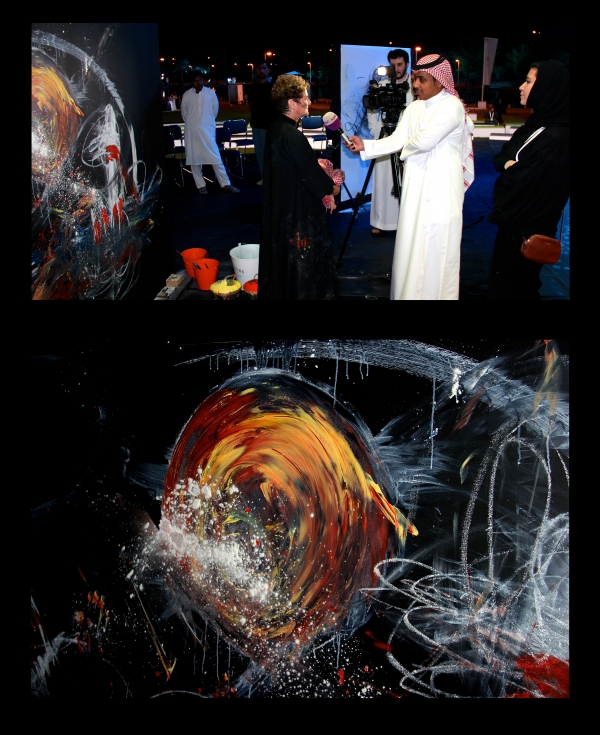How did this grant contribute to the realization of your project in regard to artistic exchange, local cultural development and/or the promotion of cultural diversity?
When I applied to the Cimetta Travel Fund, over a year ago, I had absolutely no idea, at that point, just how significant the travel award would ultimately be, with regards to the research I was able to undertake for my art practice during the residency, but also the extraordinary imaginative engagement and collaboration that emerged with the Syrian and Iraqi refugee women in the region. The most significant element was the development and substantial outcomes that have ultimately occurred over the last 8 months, which have greatly contributed, in many ways, to bringing emotional and cultural change to the communities and audiences we engaged with in Jordan, and more recently in Saudi Arabia, UK and beyond. Roberto Cimetta Travel Fund really was a significant critical catalyst for the project, and with the British Academy and CBRL (the Council for Research in the Levant) fund awarded to Dr Shanneik, and with additional incredible key support from Dr Carol Palmer and her wonderful team from Council for British Research in the Levant, in Amman and local partners including the Jordanian NGO, Khawla Bint Al-Azwar Society for Women Empowerment, we were able to expand and deliver a far more engaging project with the refugee women that we collaborated with. Throughout the trip Dr Carol Palmer, Director, and her team at the Council for British Research in the Levant – CBRL, Amman http://cbrl.ac.uk/british-Institute-amman hosted my work and me, facilitating accommodation and also a wonderful art studio.
Being based at CBRL gave me the opportunity to meet and engage with many local and International academics, archaeologists and researchers who visited the centre throughout my stay to undertake their research. Under the guidance of Dr Carol Palmer, the interaction with such experts was both invigorating and very stimulating too. CBRL also presented one of the resulting exhibitions of the artworks created in collaboration with the Syrian and Iraqi women refugees and the “All at Sea” art and music performance, that I created during the residency with British composer Freddie Meyers https://www.freddiemeyers.com. The CBRL building became the most perfect gallery and performance theatre for the project.
How does exchange, networking and international contacts contribute to the development of your artistic and cultural project?
Expressionist in artistic approach, I create both solo and collaborative art commissions and projects nationally and internationally through, painting, performance, digital film animation, dance and music, with the object of developing cross-cultural dialogues considering universal notions of humanity. As a disabled and visually impaired visual and performance artist and director, I am motivated by the notion that every voice within a community should be heard, and consequently should play an active contributing part in the community. Over the last 10 years I have focused primarily on cross-cultural collaborations, engaging vulnerable individuals and communities in UK and beyond, to create and share art that expresses and celebrates identity, diversity and culture. Often located in places experiencing conflict and that may be socially and economically deprived, my artistic vision is to draw attention to pertinent political, cultural and social issues through art, compelled by narrative. The focused outcomes being primarily underpinned by the human traits of fragility, survival and most significantly hope.
The nature of building exchanges, networking and international contacts is therefore absolutely fundamental to my art and practice, and contributes enormously to the constant development of my artistic vision and the cross-cultural projects that emerge.
Recently I have focused on UK/Arab collaborations, engaging mainstream and vulnerable/disabled individuals and communities in UK & the Arab region, with the motivation to celebrating identity, culture and spirit. My work addresses issues of human rights, and notions of vulnerability, and by reaching out to fragile communities, voices can be heard that are, all too often, excluded from political and social platforms.
Artistic and scholarly collaboration enables a far broader context to both the subject and the objectives of the narrative, and the use of multiple art forms additionally facilitates artistic engagement that transcends nationality, age and religious and social barriers to stimulate and empower many across the Globe.
Can you elaborate on the learning and knowledge you have gained and shared throughout this experience?
Through artistic engagement, one of the main objectives of the project and research was to gain first hand knowledge and personal insights into the experiences of Syrian and Iraqi refugee women’s Migration journeys and to understand how the women were now negotiating their ‘politics of belonging’ through their shaping of social relations, their challenging of religious boundaries and how the women were now facilitating community belonging and integration within their new diaspora in Jordan.
It was overwhelming at times during the workshops to hear the extremes difficulties and the situations that the women had to go through to flee the challenging circumstances of the war and conflict in their homelands. But it was also incredibly empowering to hear how the women had survived their utterly challenging circumstances and journeys, and to witness how they were now attempting to rebuild their lives. During the workshops the women absolutely embraced the process of creating art, and the activity of making art significantly lifted their spirits, and it was heartening to witness how the women all supported each other through the creative process. Many had never had the opportunity to be expressive through art before, and the process of using art as a universal language and creative tool, facilitated a deep level of engagement from all the women who participated. Some of the women could not read or write, but they certainly could paint and relished the opportunity to be able to share their stories through art.
The interest and deeply moving responses that we received to the collaborative artworks, the stories collated by Dr Shanneik, and the performance during the exhibitions, gave us a real sense of just how important it is to share these diaspora stories through creative expression where the refugee women’s experiences are the catalyst for discussion, community engagement and research.
It was extremely important to be assisted by Amna Ali Hussein (Palestinian) throughout my residency and the delivery of the art workshops. Hussein supported simultaneous interpretation throughout, which enable a greater depth of conversation and emotional engagement for me with the women – I spent my formative years living the Middle East so to some degree I am very familiar with the culture of the region – but Hussein’s sensitive approach was invaluable throughout. Hussein, like myself is also a disabled artist, and we are motivated by similar philosophical concerns. The opportunity to gain such a deep understanding of the culture during the development of the artworks, beyond the community workshops, as we painted for approx10 days to complete the artworks, was incredible.
Meyers (composer) and I additionally had the opportunity to travel to the main historical sites across Jordan, Petra, Kerak etc, and the opportunity to witness and experience, not only the refugee stories but also the historical context of the Jordanian culture and the land, ultimately gave us the inspiration to create “Ships of the Desert” a “live” art and music performance commissioned by Misk Art Festival 2018, Saudi Arabia. The performance focuses on both historical and contemporary desert migration, and is inspired by Gadsden’s recent artistic collaborations with refugees in Jordan, UK, and Germany, her artistic responses and research of the Nabateans Empire, and the ancient frankincense trade route of Arabia. The desert trade journeys of the past are juxtaposed with contemporary migrations, expressed through the voices of the women, sounds, music and live dramatic expressionist art performance, to stimulate powerful evocative responses. The performance portrays both the beauty and the challenges of present-day diaspora, to consider how individuals throughout history have undertaken demanding desert journeys and how these journeys influence our understanding of the rich heritage of Arabia.
Please indicate a link to your current work (website/facebook page)
http://www.rachelgadsden.com/rg-home
http://www.rachelgadsden.com/?location_id=321
https://vimeo.com/299734928
https://miskartinstitute.org/initiatives/misk-art-2018
https://www.facebook.com/rachel.gadsden.5
https://twitter.com/rachelgadsden
